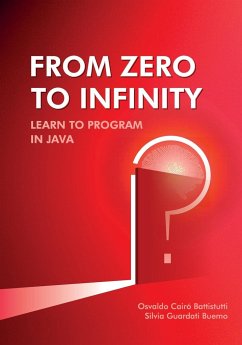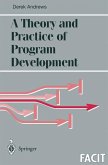This book is meant for those who want to start programming from point zero. It does not matter if those individuals are children, teenagers, adults or elders, but it is essential that they be curious and motivated to learn something new. Curiosity is one of the essential conditions that is required to read this book; it is the desire to learn something new, to know a bit more, to reason, to think, to solve problems, to transform a difficulty into a possibility, to put one's mind to work. Those who are interested may have zero or very little knowledge about programming. Learning is a psychological process involving change and a transformation of a person's behavior. This process assimilates new knowledge, adding it to a knowledge base so that it can later be applied to different situations as part of a general expansion of know-how. The learning process allows us, without even being aware of it, to model our brain by creating new synaptic links. The plasticity of the brain or cortical remapping is amazing. The brain, man's most complex organ, has the capacity to change its structure and function during a person's lifetime as a reaction to our environment, to our experiences and to our learning. Neuroplasticity allows neurons to regenerate themselves, both anatomically as well as functionally, and to generate new synaptic connections. It was not that long ago that it was thought that neurons that died were lost forever. In recent years, research has shown that the consequences of an accident, such as an object impacting the brain traumatically or even a vascular brain injury, can be reverted precisely because of the brain's plasticity. While some neurons will be lost, others can reconnect so that the system continues functioning. A neuron is an essential cell of the nervous system, and its main function is to receive, process and transmit information by way of chemical and electrical signals. The synapse, on the other hand, is a specialized functional junction between neurons. In biology it is defined as the tiny area of communication between the axon or the cytoplasmic prolongation of a neuron and the dendrite or the body of another neuron. In plain language, the synapse is the mechanism that makes possible the connection between neurons. The synaptic links allow the central nervous system to form a neuronal network, essential for perception, thought and the control of the body's systems. It is estimated that there are 100 billion (1011) neurons in the human brain; each neuron has 10,000 synaptic connections and each one carries out an average of 200 operations per second. An extensive neuronal network is synonymous with a brain that is healthy, strong and fast. If one connection between neurons is lost, we can establish dozens of additional connections. This is why it is important to keep building synaptic links through continuous learning. The brain is unique, and that is the main reason for taking care of it so much. We have to read to it, talk to it, sing to it, and feed it knowledge to make it happy. The on-going development of knowledge and the experience arising from practice culminates with the synergy of thought and action, and this harmony is magic - it is what motivates us and what determines our way of life. The connection between learning to program and neurons, synaptic links and the brain is closer than one might infer. When we learn to program and to solve problems, we are creating synaptic links that are essential for the development of our neuronal network and therefore of our human self, our cognitive self.
Hinweis: Dieser Artikel kann nur an eine deutsche Lieferadresse ausgeliefert werden.
Hinweis: Dieser Artikel kann nur an eine deutsche Lieferadresse ausgeliefert werden.








